This article was co-authored by Diana Lee, MD. Dr. Diana Lee is a Surgical Retina Fellow. She received her MD from Georgetown University in 2015, did her fellowship at UCLA's Jules Stein Eye Institute, and completed her first residency at USC's Roski Eye Institute. Currently, she is a resident at the Los Angeles County Department of Health Services and a clinical fellow with Associates in Ophthalmology. Her research interests are diverse and include: cataract surgery, dry eye, thyroid eye disease, retinoblastoma and diabetic retinopathy.
There are 27 references cited in this article, which can be found at the bottom of the page.
wikiHow marks an article as reader-approved once it receives enough positive feedback. This article has 14 testimonials from our readers, earning it our reader-approved status.
This article has been viewed 1,273,386 times.
Cysts are closed sacs filled with fluid. They can occur anywhere on the body and can be caused by infections, genetics, a defect in the cells, or blocked ducts. Discovering a cyst can be scary, but there are things you can do to treat it so you're less uncomfortable.
Steps
Determining a Type of Cyst
-
1Distinguish between a sebaceous cyst and epidermoid cyst. An epidermoid cyst is more common than a sebaceous cyst.[1] Each will have slightly different symptoms and will be treated just a little differently. Therefore, it is important that the cyst you have on your skin is diagnosed appropriately for effective treatment.
- Both types of cysts are flesh-colored or white-yellow and have a smooth surface.[2]
- Epidermoid cysts are more common. These are slow growing and often painless. They don’t usually require treatment, unless they are causing pain or become infected.
- Pilar cysts are composed primarily of keratin (the protein that makes up hair and nails) and form from the outer hair root sheath, typically on the head.[3] A pilar cyst is often thought to be another term for a sebaceous cysts, but they are in fact different.
- Sebaceous cysts are commonly found in the hair follicles on the head. They form inside the glands that secrete sebum, an oily substance that coats the hair. When these normal secretions are trapped, they develop into a pouch containing a cheese-like substance. They are commonly found in areas near the neck, upper back, and on the scalp.[4] Sebaceous cysts are often confused with pilar or epidermoid cysts.
-
2Distinguish between cysts in the breast and tumors. Cysts can be in one or both breasts. Without a mammogram or needle biopsy it is almost impossible to distinguish between the two different types of lumps in the breast. Symptoms of a breast cyst will include:[5]
- Smooth, easily movable lump with distinct edges
- Pain or tenderness over the lump
- Size and tenderness will increase just before your period starts
- Size and tenderness will decrease when your period ends
Advertisement -
3Understand cystic acne. Acne is a general term that describes a variety of different types of pimples, blackheads, pustules, whiteheads and cysts. Cystic acne are nodules that are red, raised, often 2–4 mm in size and nodular and are the most severe form of acne. The infection in a cystic acne is deeper than that in other pustules or whiteheads. Cystic acne is painful.[6]
-
4Identify a ganglion cyst. These are the most common types of lumps found on the hand and wrist. They are not cancerous and often harmless. Filled with fluid, they can quickly appear, disappear or change in size. They do not require treatment unless they interfere with function or are unacceptable in appearance.[7]
-
5Determine if pain is from a pilonidal cyst. In this condition there is a cyst, abscess or dimple that forms in the crease between the buttocks that runs from the lower end of the spine to the anus. It can be caused from wearing tight clothing, excess body hair, sitting for long periods of time or obesity. Symptoms can include pus from the area, tenderness over the cyst, or the skin may be warm, tender or swollen near the tailbone. Or there may not be any symptoms beside a pit or dimple at the base of the spine.[8]
-
6Distinguish a Bartholin gland cyst. These glands are located on either side of the vaginal opening to lubricate the vagina. When the gland becomes obstructed, a relatively painless swelling forms called a Bartholin's cyst. If the cyst is not infected you may not notice it. An infection can occur in a matter of days causing tenderness, fever, discomfort walking, pain with intercourse, and a tender, painful lump near the vaginal opening.[9]
-
7See a doctor for swelling in the testicles. All testicular swelling must be diagnosed by a physician to determine the differences between a cyst, cancerous growth, hydrocele or infection in the testicles. A testicular cysts, also called a spermatocele or epididymal cyst, is typically a painless, fluid-filled, noncancerous sac in the scrotum above the testicles.[10]
-
8Consider getting a second opinion if you are not satisfied with your physician’s diagnosis and treatment. Although most epidermoid and pilar cysts do not require treatment from a physician, if you do seek medical advice and are not satisfied with the results seek a second opinion. Most sebaceous and epidermoid cysts are straightforward, but there are other conditions that may mimic these cysts.[11]
- In a case study written in the Royal College of Surgeons of England, the authors presented two cases in which melanoma and a deep oral cavity were originally mistaken for a sebaceous cyst.
- There are a variety of other infectious processes that may be mistaken for a sebaceous cyst, including boils, furuncles and carbuncles.
Preventing a Cyst
-
1Understand which cysts are not preventable. Pilar cysts develop after puberty and have an autosomal dominant inheritance. This means that they occur in both sexes and if one parent carries the gene for a pilar cyst then it increases the risk that the children will experience these cysts. Seventy percent of people who get them will have multiple cysts over their lifetime.[12]
- There is no known cause at this time for cysts that develop in the breast tissue.
- Doctors do not have a clear answer about the risk factors and prevention for Cystic acne but it is believed to be related to increasing hormonal levels in puberty and pregnancy and deep infections from hair follicles plugged by sebum (oil on the skin).[13]
-
2Understand which cysts are preventable. Most cysts are not but some are. For instance, prevention for a pilonidal cyst includes wearing clothing that is not tight, maintaining normal weight limits, and getting up from a seated position every 30 minutes throughout the day.[14]
- According to the American Academy of Dermatology, there is no effective means of preventing an epidermoid cyst from forming.[15] However, there are groups of people who appear to be at greater risk for developing them: more men than women, acne sufferers, and people who spend a long time in the sun.[16]
- People who have suffered hand injury are more likely to experience an epidermoid or ganglion cyst on the hand.
- Bartholin gland cysts can occur after injury to the area at the opening to the vagina.
-
3Lower your chances of developing cysts. While most cysts are not preventable, you can lower your risks of getting the ones that are. Use oil-free skin products and avoiding excessive sun exposure.
- Shaving and waxing may also be responsible for cyst formation. Avoid excessive shaving and waxing in areas where you have already gotten cysts to prevent reformation or new cysts.
Treating a Cyst at Home
-
1Treat uninfected epidermoid and sebaceous cysts at home. Signs of infection include the area becoming swollen, red, tender, or red and warm. If your home treatment for these cysts is not effective or if you experience symptoms, which indicate an infection, you should seek medical care from your physician.[17]
- If the cyst causes pain or discomfort with walking or intercourse, medical care is needed to treat the cyst.
-
2Use a wet, warm compress over an epidermoid cyst to encourage it to drain and heal. The washcloth should be hot but not so hot that it burns the skin. Place it over the cyst two to three times a day.[18]
- Cystic acne responds better to ice than it does to heat.
- Bartholin gland cysts can be treated at home using warm water sitz baths. This involves sitting in several inches of warm water to encourage the cyst to drain.
-
3Refrain from picking, squeezing, or trying to pop either an epidermoid cyst or sebaceous cyst. This can increase the risk of infection and scarring. Also, never pick, squeeze or attempt to pop a cystic acne. This drives the infection deeper and increases the risk of scar tissue.[19]
-
4Allow an epidermoid cyst to drain naturally. Once it begins to drain, cover it with a sterile dressing, which you can change twice a day. If a large amount of pus begins to drain from the cyst, the skin surrounding the cyst turns red, the area becomes warm and tender, or blood begins to drain from the cyst, it is time to seek medical care.[20]
-
5Keep the area clean. To prevent an infection, keep the cyst and the area surrounding it clean. Wash it daily using an antibacterial soap or cream.
Seeking Medical Care
-
1Know when to call a doctor. Most cysts are completely harmless and will go away on their own, while others may require medical attention. Call your doctor if the cyst is painful or swollen, or if the skin around the affected area becomes warm, as these are signs of an infection.[21]
-
2Ask your doctor about removal. If the cyst is interfering with your everyday life, don't attempt to pop it yourself. Talk to your doctor to determine whether it would be safe and advisable to have it surgically removed.[22]
-
3Evaluate your surgical options. These will vary depending upon the location, the size, and how the cyst may be interfering with bodily functions. There are three options for the removal of cysts in the body. You and your physician should discuss each to determine which is the best option for your circumstances and the type of cyst you have.
- Incision and drainage (I & D) is a simple procedure where the physician makes a 2-3 mm cut in the cyst and gently expresses the contents of the cyst. This can be done in the office for skin cysts, such as epidermoid and sebaceous cysts and surface pilonidal cysts which are not deep or infected if necessary. I & D can be used for breast cysts, ganglion cysts, testicular or bartholin gland cysts on an outpatient basis using either general or local anesthesia.However, there is a higher incidence of recurrence when the cyst wall is not removed. In an incision and drainage the wall cannot be removed.
- A minimal excision technique will remove the wall of the cyst and the cheesy center material.[23] The cyst is opened and drained before the cyst wall is pulled out. Sutures may or may not be necessary, depending upon the size of the incision. This technique will be the treatment of choice for breast cysts, testicular cysts, bartholin gland cysts, and ganglion cysts. Surgical excisions are very rarely done for cystic acne. Surgical excision is generally done under local anesthesia and often as an outpatient procedure, while general anesthesia is used for children.
- Laser removal is an option for only epidermoid cysts when they are large or are in an area where the skin is thick. It entails opening the cyst with a laser and gently expressing the the fluid inside. One month later a minimal incision is made to pull out the cyst wall. This gives good cosmetic results in cases where the cyst is not inflamed or infected.[24]
-
4Determine if removal of a skin cyst is necessary. There are treatments that can be done at home to encourage drainage and healing of sebaceous and epidermoid cysts. However, it is important to seek medical care if the area appears infected, if the cyst grows rapidly, if the cyst is in a spot that is constantly irritated, or if you are bothered for cosmetic reasons.[25]
-
5Determine if removal of a cyst on the breast is necessary. No treatment is necessary for a simple fluid filled cyst on the breast. If you haven’t reached menopause, your doctor will ask that you monitor the cyst each month. Your physician may do a fine needle aspiration to drain the cyst.[26]
- If you notice a cyst through two or three menstrual periods that does not resolve spontaneously, or increases in size, your doctor may order an ultrasound.
- Your physician may recommend oral contraception to regulate your menstrual cycle hormones. This treatment is only used in women with severe symptoms.
- Surgical removal is necessary only when the cysts are uncomfortable, have blood-tinged or green-colored fluid on aspiration, or the physician believes there may be a non-benign growth pattern. In this case the entire cyst will be removed with anesthesia as an incision and drainage technique would leave the capsule and increase the risk the cyst will reappear.
-
6Consult with a dermatologist for treatment of cystic acne. They will first prescribe medications used to treat other types of acne. If you do not receive good results, the doctor may recommend the use of isotretinoin or Accutane.[27]
- Accutane is an effective medication that helps manage acne. However, may cause serious side effects, such as birth defects, can increase the risk of depression and suicide, and can affect your lipid levels, liver function, blood sugar, and white blood cell count. You will need to have blood tests done once monthly to monitor your response to the medication.[28] Women must be on two forms of contraception to take Accutane.
-
7Seek treatment for a ganglion cyst. Treatment for this type of cyst is usually nonsurgical and will include observation. The area can be immobilized if activity increases the size, pressure or pain to the area.[29] Aspiration of the fluid in the ganglion cyst might be done if it is causing pain or limiting activity. In this procedure the physician takes the fluid out of the cyst with a fine needle, in the office under sterile conditions.
- If symptoms are not relieved through nonsurgical methods (needle aspiration or immobilization), or the cyst returns after aspiration, your doctor may recommend a surgical excision of the cyst also known as total ganglionectomy. During excision part of the involved tendon or joint capsule will also be removed. There is a small chance that the cyst will return even after complete removal. This is a surgical procedure done under local anesthesia and is often an outpatient procedure.
-
8Treat a Bartholin gland cyst. The type of treatment is dependent upon the size of the cyst, your discomfort, and whether or not it’s infected. Warm sitz baths (sitting in several inches of warm water) several times a day can help the gland to drain on its own.[30]
- Surgical incision and drainage will be used if the gland is very large or infected and sitz baths are not effective. Local anesthesia or sedation will be used. A catheter will remain in the gland to keep it open for up to six weeks to allow for complete drainage.
- Antibiotics may be prescribed to treat the infection.
-
9Understand treatment of a testicular cyst. First a physician must determine that the growth is non-cancerous.[31] If the cyst is large enough to trigger a feeling of heaviness or dragging in the testicle, surgical excision will be discussed.[32]
- Children’s Hospital of Philadelphia does not initially recommend surgery for their adolescents. Instead, they recommend that the young men learn to do self-examinations and report any changes or increases in size which may indicate the need for surgical treatment. Cysts in children often resolve on their own.
- Percutaneous sclerotherapy is an option that reduces the risks of surgery to the scrotum and has had good results in research.[33] Using ultrasound to guide the injection of a sclerosing agent, 84% of the men used in the study were symptom free in six month. The sclerosing agent will reduce the size and symptoms of a testicular cyst. This procedure has significantly less physical risk and less risk of recurrence of the cyst.
Warnings
- Never pop, squeeze or pick at a cyst. This will increase the risk of infection and scarring of the tissue.⧼thumbs_response⧽
- Most skin cysts will resolve on their own. If you would like yours removed quickly, see your physician who will discuss your treatment options based on the size, location and type of cyst you have.⧼thumbs_response⧽
- Always wash your hands before and after treating a cyst or any other skin infection.⧼thumbs_response⧽
References
- ↑ https://medlineplus.gov/ency/article/000842.htm
- ↑ https://www.drugs.com/health-guide/cysts.html
- ↑ http://www.dermnetnz.org/lesions/pilar-cyst.html
- ↑ https://www.drugs.com/health-guide/cysts.html
- ↑ https://my.clevelandclinic.org/health/diseases/15691-breast-cysts
- ↑ https://my.clevelandclinic.org/health/diseases/21737-cystic-acne
- ↑ https://orthoinfo.aaos.org/en/diseases--conditions/ganglion-cyst-of-the-wrist-and-hand/
- ↑ https://familydoctor.org/condition/pilonidal-cyst/
- ↑ https://familydoctor.org/condition/bartholins-gland-cyst/
- ↑ https://patient.info/mens-health/scrotal-lumps-pain-and-swelling/epididymal-cyst
- ↑ http://www.researchgate.net/publication/5651007_Just_another_sebaceous_cyst
- ↑ http://www.drugs.com/health-guide/epidermoid-cyst.html
- ↑ http://www.niams.nih.gov/health_info/acne/
- ↑ https://my.clevelandclinic.org/health/diseases/15400-pilonidal-disease
- ↑ https://www.health.harvard.edu/a_to_z/epidermoid-cyst-a-to-z
- ↑ http://www.dermatologist.org.uk/epidermoid-cysts.html
- ↑ https://my.clevelandclinic.org/health/diseases/14165-sebaceous-cysts
- ↑ https://medlineplus.gov/ency/article/000842.htm
- ↑ https://my.clevelandclinic.org/health/diseases/14165-sebaceous-cysts
- ↑ https://my.clevelandclinic.org/health/diseases/21465-epidermal-inclusion-cyst
- ↑ https://medlineplus.gov/ency/article/000842.htm
- ↑ https://patient.info/doctor/epidermoid-and-pilar-cysts-sebaceous-cysts-pro
- ↑ http://www.aafp.org/afp/2002/0401/p1409.html
- ↑ http://www.ncbi.nlm.nih.gov/pmc/articles/PMC2714896/
- ↑ https://patient.info/skin-conditions/epidermoid-and-pilar-cysts-sebaceous-cysts-leaflet
- ↑ https://my.clevelandclinic.org/health/diseases/15691-breast-cysts
- ↑ https://my.clevelandclinic.org/health/diseases/21737-cystic-acne
- ↑ https://www.drugs.com/mtm/isotretinoin.html
- ↑ http://orthoinfo.aaos.org/topic.cfm?topic=a00006
- ↑ https://www.uofmhealth.org/health-library/tw2685
- ↑ http://onlinelibrary.wiley.com/doi/10.1002/tre.200/pdf
- ↑ https://www.uofmhealth.org/health-library/tv7861spec
- ↑ http://www.ncbi.nlm.nih.gov/pubmed/12949457
About This Article
To treat a non-painful epidermoid cyst, which is the most common type of cyst, hold a moist, warm compress on the cyst 2-3 times a day to help it drain faster. You can also use an ice pack to reduce any pain and swelling. Remember to wash the area around the cyst with antibacterial soap daily so it doesn't get infected, and try not to pick or squeeze it while you wait for it to go away. If your cyst is causing you pain and discomfort, you may want to talk to your doctor about getting it removed. To learn more about how to prevent developing cysts in the future, keep reading below!
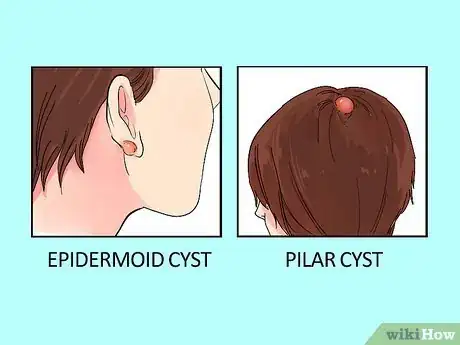
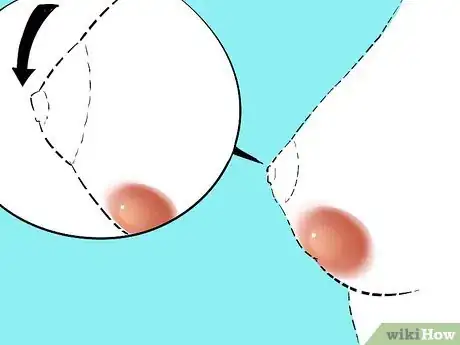
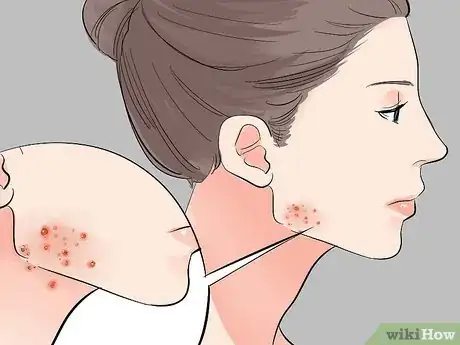
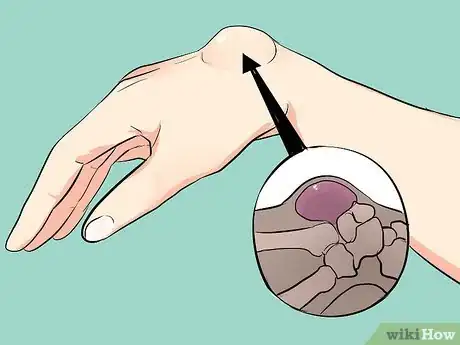
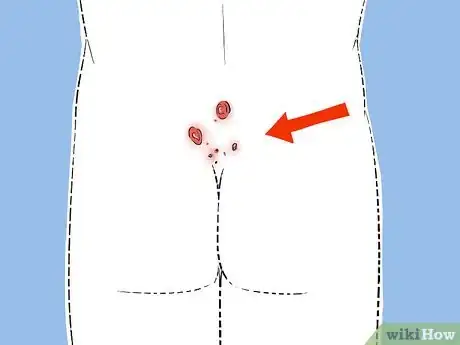
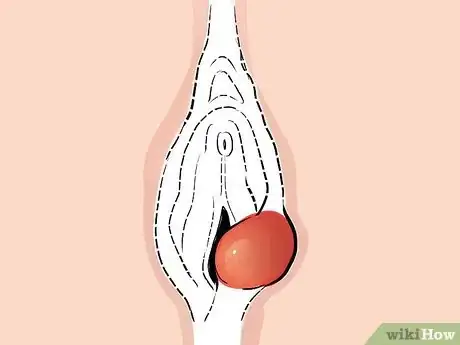
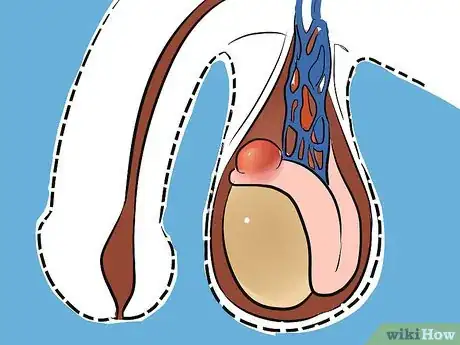

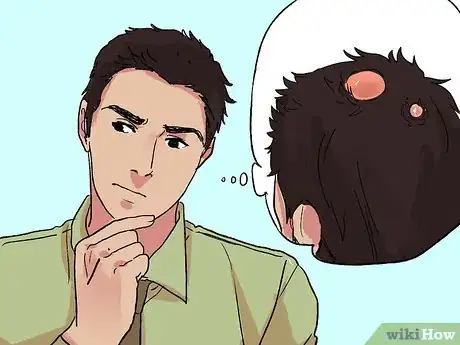
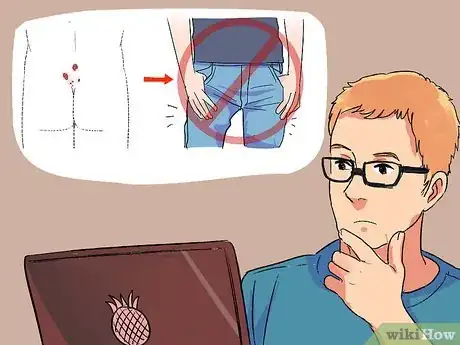
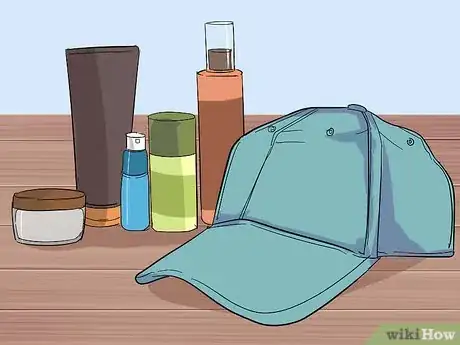
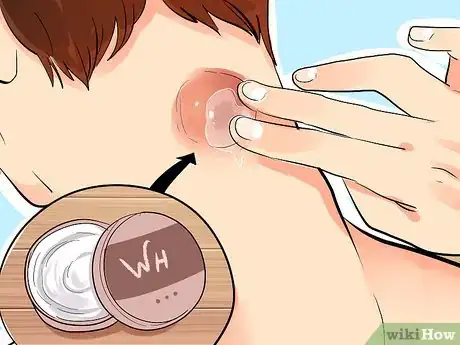
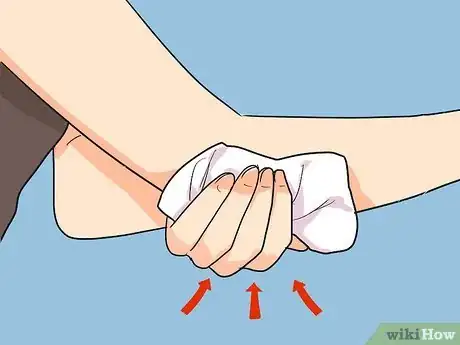
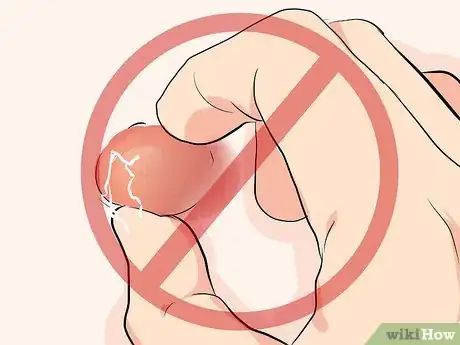
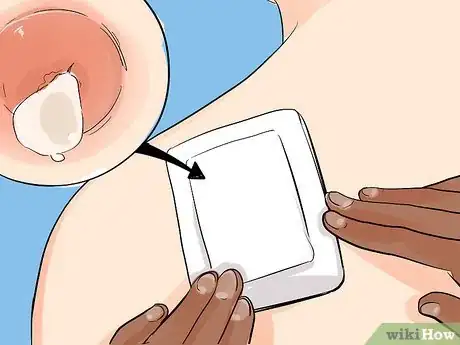

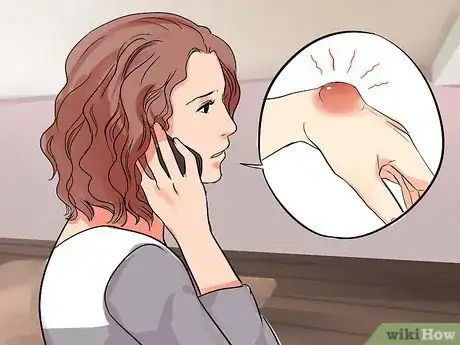
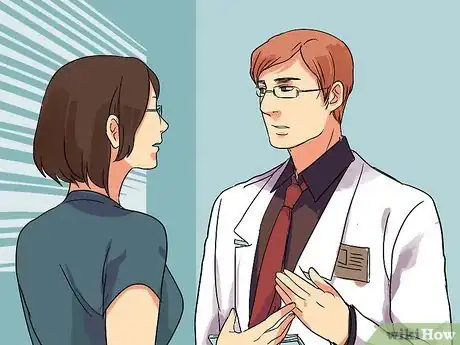
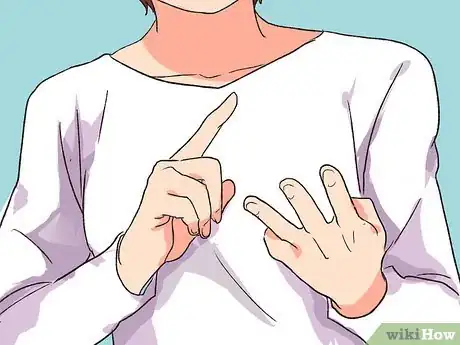
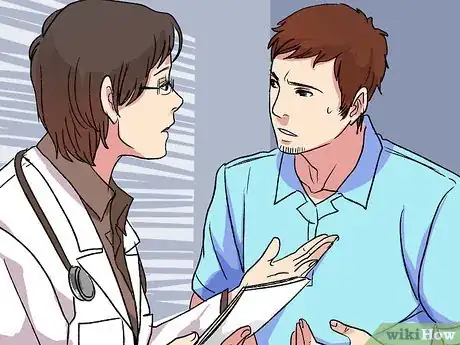
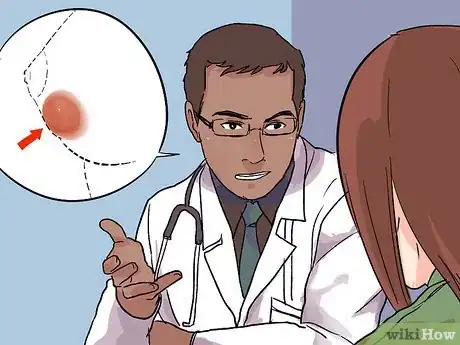

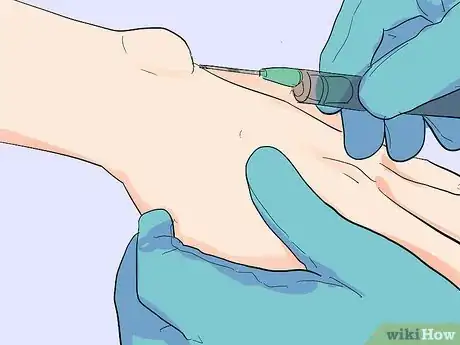
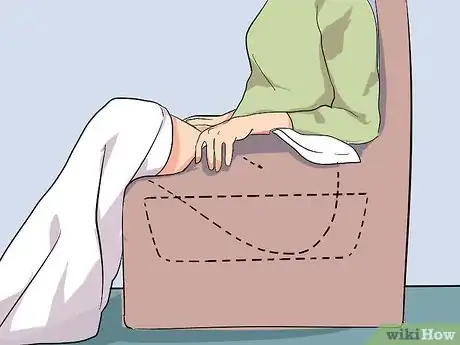
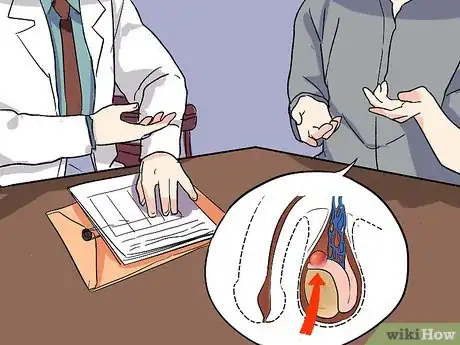
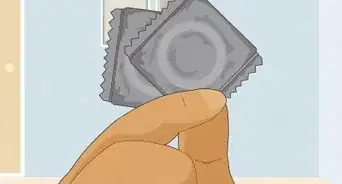
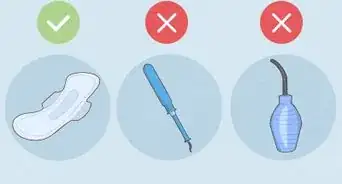
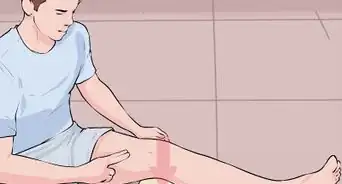
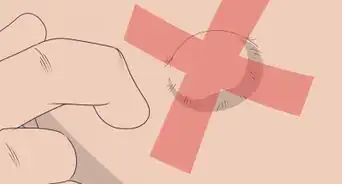
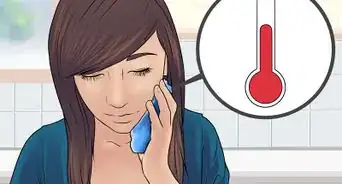
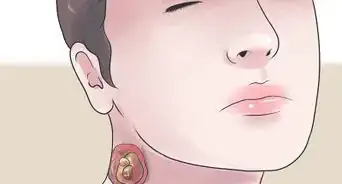
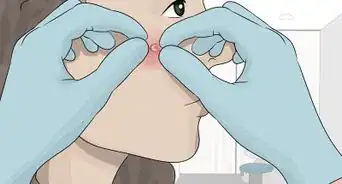
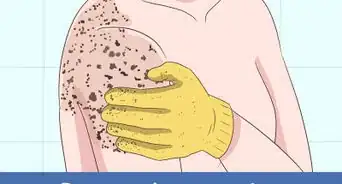
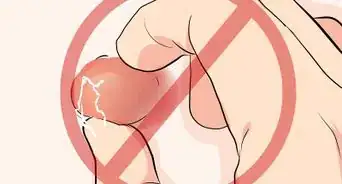
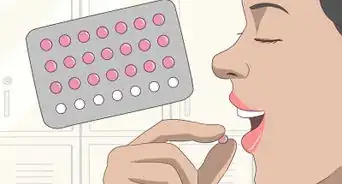
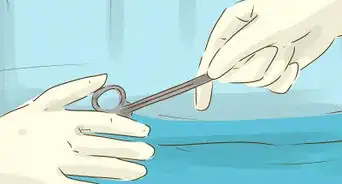
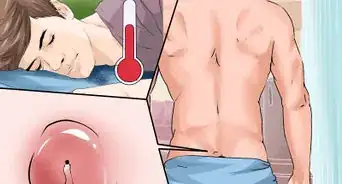
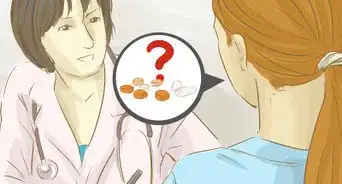
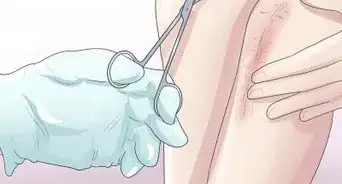











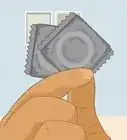
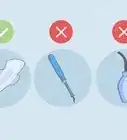
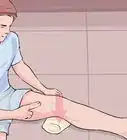
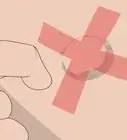



































Medical Disclaimer
The content of this article is not intended to be a substitute for professional medical advice, examination, diagnosis, or treatment. You should always contact your doctor or other qualified healthcare professional before starting, changing, or stopping any kind of health treatment.
Read More...